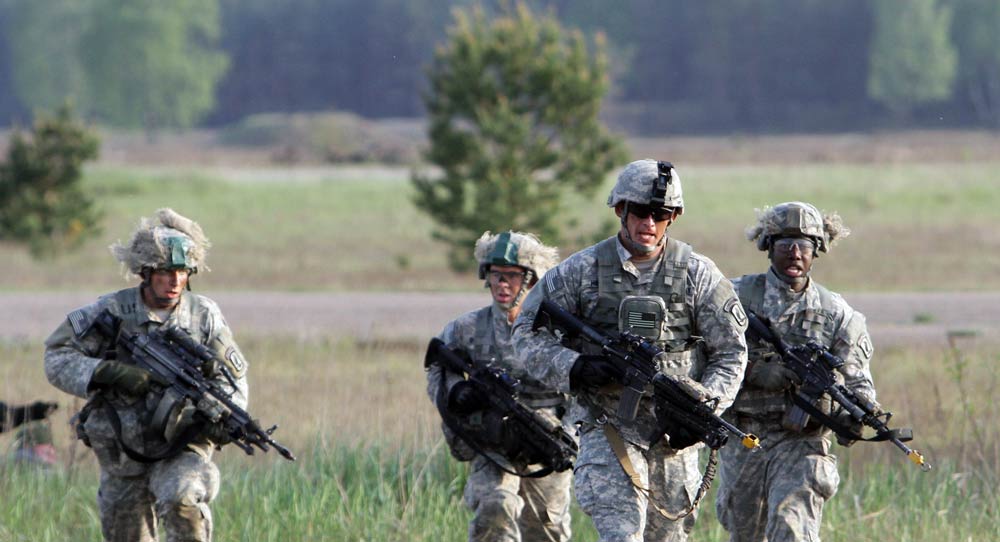On January 19, the Trump administration released its first National Defense Strategy (NDS), or at least a relatively short, twelve-page summary of the presumably much longer classified version. In sharp contrast to the early months of the Trump presidency, this new strategy says all the right things about alliances such as NATO. Nevertheless, the strategy holds mixed implications for Europe—ultimately, the new NDS appears unlikely to salve all of the continent’s concerns over the transatlantic relationship.
The NDS comes on the heels of the December 2017 publication of the Trump administration's National Security Strategy (NSS). Several of the themes evident in the NSS are given greater voice in the NDS, which sets an azimuth for American defense policy over the next several years. Many of these themes are sure to be music to the ears of Europeans, who have expressed grave doubts over the direction of American strategy and the constancy of the U.S. commitment not simply to Europe but to the global order more broadly.
Europeans will doubtless be heartened to see the NDS states that U.S.-centered alliances remain the backbone of global security, providing the United States with an asymmetric strategic advantage over every adversary and competitor. This is no exaggeration—for all NATO’s faults, the Russians and Chinese have nothing like it in terms of comparable political, military, or soft power.
Additionally, the NDS is clear in stating that alliances ease America’s security burden. The White House’s intensive focus on burden sharing aside, the NDS explicitly praises allies for consistently joining the United States in “defending freedom, deterring war, and maintaining the rules which underwrite a free and open international order.”
In addition to these mainstream perspectives on alliances, Europeans are likely also to be heartened by what they see in the NDS with regard to their region of the world. Specifically, the NDS labels a “strong and free Europe” as vital to U.S. security. This is especially reassuring given what some have perceived as the White House’s antipathy toward free trade agreements and related arrangements like the European Union.
Additionally, while the NDS notes that NATO must include counterterrorism among its missions, the Pentagon gives a nod to the increasingly more important role that European states have assigned to the EU in this regard, especially in Africa.
Despite all of this good news for Europe in the new NDS, there are shortcomings that should temper any celebration. First is the limited way in which the NDS conceptualizes “strengthening alliances.” Specifically, the NDS notes the United States will achieve this objective by upholding a foundation of shared responsibility; expanding consultative mechanisms and collaborative planning; and deepening interoperability.
Certainly there is much work to be done to lock in and build upon the interoperability gains generated by over a decade of war in Afghanistan. However, as further expounded upon in the NDS, the other two methodologies appear to be merely variations on the aforementioned burden sharing theme. What’s missing from this list of policy tools—among other things—is whether and how American posture overseas, particularly in Europe, should evolve to meet the challenges of today and tomorrow. The NDS calls for a new Global Operating Model of “flexible overseas postures,” but sheds no light on applying this to Europe or elsewhere.
In a similar vein, the new NDS fails to provide a solid conceptualization of what competition vis-à-vis Russia looks like in a Europe underdoing realignments of various sorts. The tendency toward illiberal politics within some allies; the continuing challenge of a corrosive, nativist populism across the continent; and the shifting strategic dynamics between London, Paris, and Berlin make for a challenging landscape. The NDS provides little in the way of road signs or insights into how the Pentagon will do its part to achieve some semblance of consensus.
Another topic on which it may be hard to forge consensus with European allies is over the role of nuclear weapons. The new NDS calls for the modernization of America’s nuclear triad, and explicitly highlights Russia’s updated, growing nuclear arsenal as an important rationale. Although NATO has expressed its concerns over Russian violation of a key nuclear arms treaty, there remains unease within Europe and especially within Germany toward the role of nuclear weapons in alliance deterrence policy.
Even on the interoperability point, the NDS appears to gloss over some thorny challenges. Perhaps the most important of these is how the United States will keep Europe on the same page in terms of technology and what’s become of the Third Offset. The NDS offers scant detail on this, particularly in terms of whether and how the United States will bring Europeans in on the ground floor when it comes to requirements definitions and acquisition decisions.
Finally, there remains the perceived divide between what appears in documents like the NDS on the one hand and the words and actions of the U.S. president on the other. Despite efforts by some key officials and advisors in the Pentagon, State Department, and National Security Council to promulgate strategies and policies designed to bolster America’s commitment to and relationship with Europe over the last year, a gap evidently persists.
For all of these reasons, the NDS appears destined to fall short of fully satisfying the allies. Then again, it’s unclear if any U.S. strategy could fulfill that tall order, given European perceptions of the Trump presidency.
Dr. John R. Deni is a research professor at the Strategic Studies Institute of the U.S. Army War College and an adjunct professor at the American University’s School of International Service. He’s the author most recently of NATO and Article 5. The views expressed are those of the author and do not necessarily reflect the official policies or positions of the U.S. Department of the Army, the U.S. Department of Defense, or the U.S. government.





.jpg)
.jpg)

